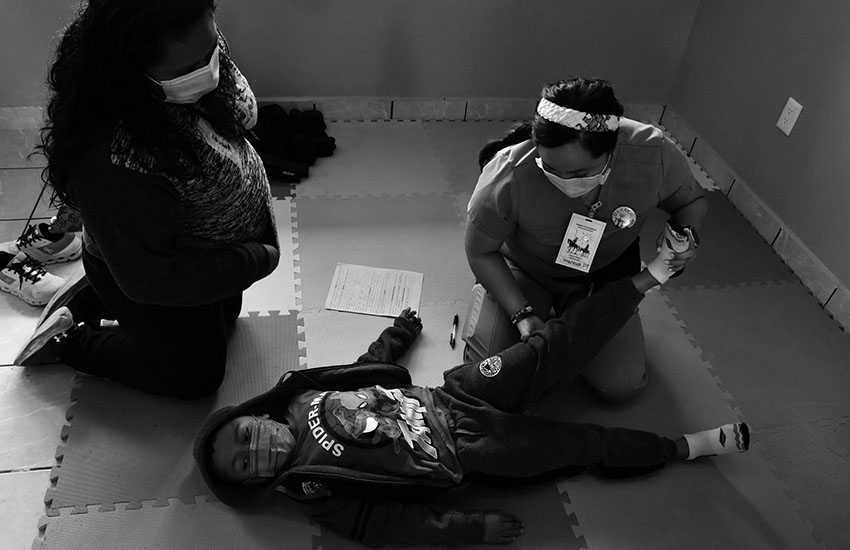With beautiful colonial buildings, the impressive Monte Alban ruins and sites like the Santo Domingo cathedral, Oaxaca city is a major tourist attraction. But hidden from view, there is deep poverty.
Oaxaca is Mexico’s third poorest state, one where 66% of the population earns less than US $187 a month, and 22% earns less than $93 a month. People with incomes that low cannot afford even basic medical care.
That’s where Quijotes, a San Antonio, Texas, nonprofit, comes in.
The group has been bringing free medical care to Mexico since 1989. They collaborate with local governments and medical programs, Mexican doctors and medical students. This year, from September 3–10, Quijotes brought to Oaxaca city close to 100 health care personnel and medical supplies worth over US $200,000.

“Oaxaca has a large indigenous population,” said gynecologist Lety Vargas, the group’s president, “so we decided to go there. The whole idea behind Quijotes started with the belief of [the literary character of] Don Quijote and the belief that it’s all about fighting off giants — the giants of poverty and poor health.”
Diana Ballesteros, a family medicine doctor and Quijotes’ vice president, has been participating in the drive for 25 years. Over two and a half decades, she’s seen marked changes in people’s health. But they fight challenges as well.
“The number of diabetic cases in Oaxaca has shot up,” she said. “This is because they’ve adopted an American diet.”
Many of the people examined didn’t know they were diabetic, she said.

“It can cause blindness,” said Roger Velázquez, an ophthalmologist. “Elevated blood sugars will damage blood vessels, especially in the eyes.”
About 30% of the patients he saw needed glasses, which are provided free. Juana Rojas came to the clinic because she couldn’t afford new ones.
“The ones I had were very old. I like to read,” she said, “and now I can.”
Jovannah Ortiz, who has a doctorate in physical therapy, saw many patients with arthritis, musculoskeletal pain and muscle weakness.

Muscle weakness in babies may have a common cause, explained Sharvari Parjhi, a pediatric physician. “They’re carried in a sling too much,” she said. “They need exercise.”
Visitors were anxious to get dental and nutrition information. Dentist Javier García showed people the right way to brush their teeth while nutritionist Valeria Romero counseled them about diet.
“The biggest problem is soda consumption,” she said. “I tell them, ‘Don’t drink it every day.’”
Fundraisers mainly supply the charity’s budget, said Yolanda Pérez, a retired nurse and the organization’s treasurer.

“All donations go to the project,” she said. “Nothing goes to salaries.” Medical staff pay for their own trips, a cost of around US $2,000 per person.
“The people in this group spend their own money to give this work for free,” said Dr. Liliam Irasema García Pérez, a Oaxacan public health specialist who started working with Quijotes in 1989. “Instead of going to the beach, these people come here to work. They give much hope to people.”
- If you’d like to help Quijotes, you can make a donation on their website.
Joseph Sorrentino, a writer, photographer and author of the book San Gregorio Atlapulco: Cosmvisiones and of Stinky Island Tales: Some Stories from an Italian-American Childhood, is a regular contributor to Mexico News Daily. More examples of his photographs and links to other articles may be found at www.sorrentinophotography.com He currently lives in Chipilo, Puebla.





